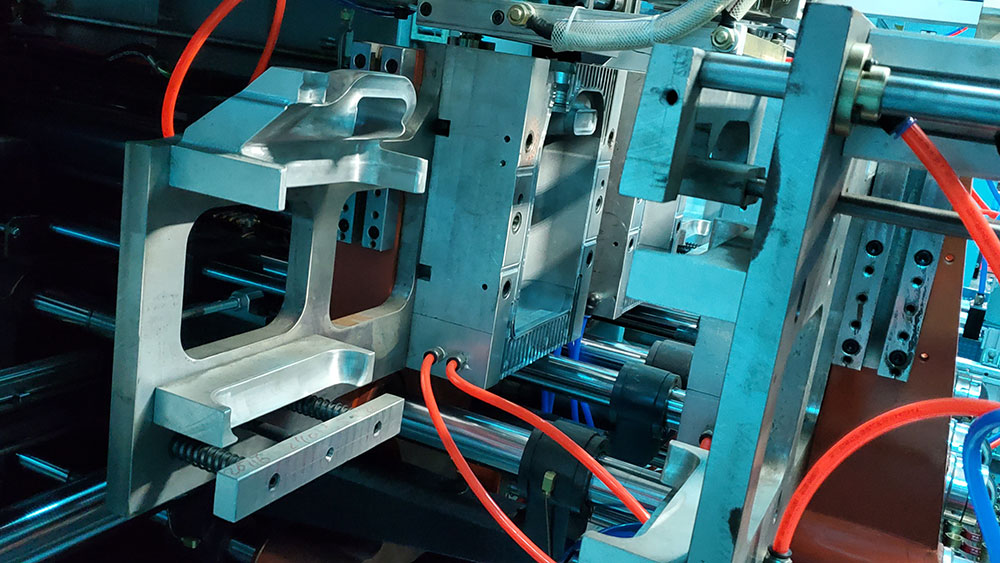
Blow molding can be divided into two blow molding methods, hollow and film. Hollow blow molding can also be divided into extrusion blowing, injection blowing, extrusion stretch blowing, injection stretch blowing and other molding methods. Today, I will briefly introduce the key points of extrusion blow molding design. The extrusion blow mold is mainly composed of two half molds, which are generally composed of a mold body, a mold cavity, a clamping blank, a guide post, etc. The main requirements for the mold structure design are as follows,
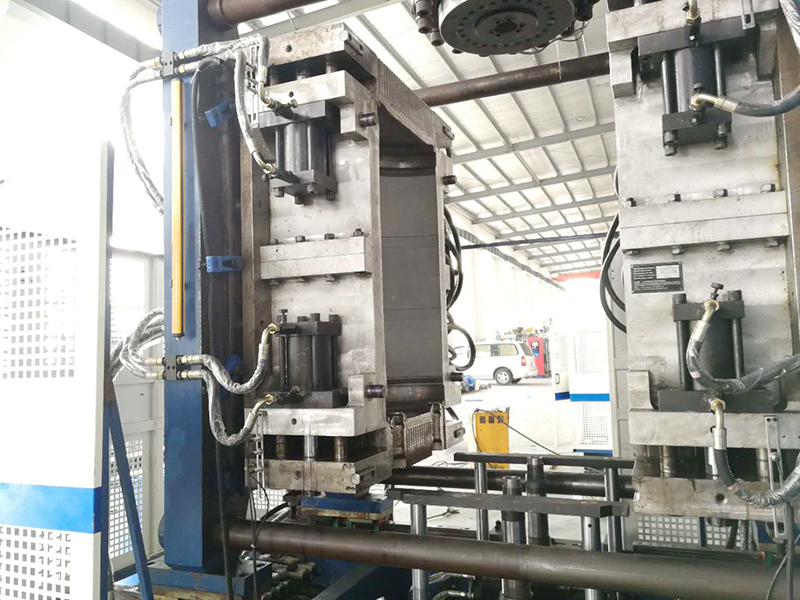
Mould parting surface
The structure design of the extrusion blow mold mold parting surface position selection should make the mold symmetrical, reduce the inflation ratio, easy to demold the product. Therefore, the position of the parting surface is usually determined by the shape of the blow-molded product cavity. Most blow molds are designed as two mold halves that match the parting surface. For bottles and containers with irregular shapes, it is particularly important to determine the position of the parting surface. If the position is not correct, the product cannot be demolded. Or cause the bottle to be scratched. At this time, a mold with an irregular parting surface is needed, and sometimes a multi-parting surface mold composed of three or more movable parts is used to facilitate product demolding.
The red part is the parting surface
Cavity
The cavity of the blow mold directly determines the shape, size and appearance performance of the product. The surface of the mold cavity used for PE blow molding should be slightly rough. Otherwise, the mold cavity will be poorly vented, air bubbles will be trapped, and the product will appear "orange peel" surface defects. It will also cause the cooling rate of the product to be low and uneven, so that the shrinkage rate of the product is different. Sandblasting the cavity can form a rough surface. The blasting particle size should be appropriate. For HDPE blow molds, a coarser particle size can be used, and LDPE should use a finer particle size. Etching the cavity can also form a rough surface, and can also form a pattern on the surface of the product. When blowing highly transparent or high gloss containers (especially using PET, PVC or PP), the cavity should be polished. For the blow molding of engineering plastics, the mold cavity generally cannot be sandblasted. In addition to the pattern that can be etched, it can also be polished or matted.
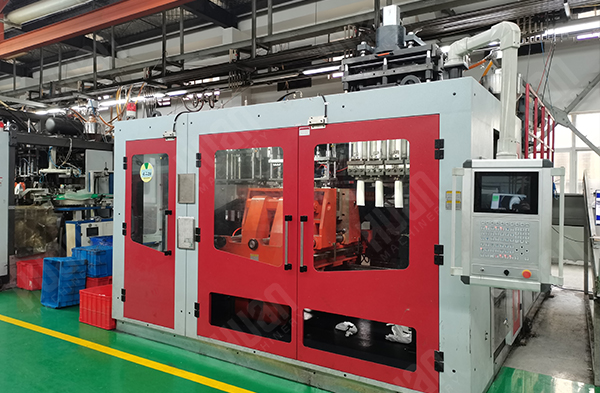
The size of the mold cavity is mainly determined by the overall dimensions of the product and at the same time considering the shrinkage rate of the product. Shrinkage generally refers to the difference between the size of the mold cavity at room temperature (22°C) and the size of the product after 24 hours of molding. For example, in blow molding of HDPE bottles, 80% to 90% of the shrinkage rate occurs within 24 hours after molding.
Die cut
The die part of the blow mould should be a sharp cut to cut off the parison, referred to as the clip or knife edge. The minimum longitudinal length of the jaw for cutting the parison is 0.5~2.5mm. If it is too small, it will reduce the thickness of the joint seam of the container and reduce its joint strength. It is even easy to cut the parison and is not easy to inflate. If it is too large, the tail cannot be cut. , It can't even close the mold completely. The shape of the incision is generally triangular or trapezoidal. In order to prevent the incision from being worn, the inserts are usually made of cemented carbide material and are embedded in the mold. The angle that the end of the incision expands to the mold surface varies with the type of plastic. LDPE can be 30°-50°, and HDPE is 12°-15. A tailing trough is opened below the cutting edge of the blank, which is located on the parting surface of the mold. The depth of the tailing trough has a great influence on the molding of blow molding and the automatic trimming of products, especially for parisons with large diameter and small wall thickness. If the groove depth is too small, the tail material will be squeezed by excessive pressure, so that the die, especially the cutting edge of the blank, will be subjected to excessive strain, and even the die cannot be completely closed, making it difficult to cut the tail material; if the groove depth is too large, the tail material cannot It is in contact with the groove wall and cannot be cooled quickly. The heat will be transferred to the joint of the container to soften it, and the joint will be stretched during trimming. (The depth of the tailing groove of each half of the mold is best to be 80% to 90% of the wall thickness of the parison. The angle of the tailing groove should also be selected appropriately, usually 30° to 90°. When the width of the clamping blank is large , Generally take the larger value.
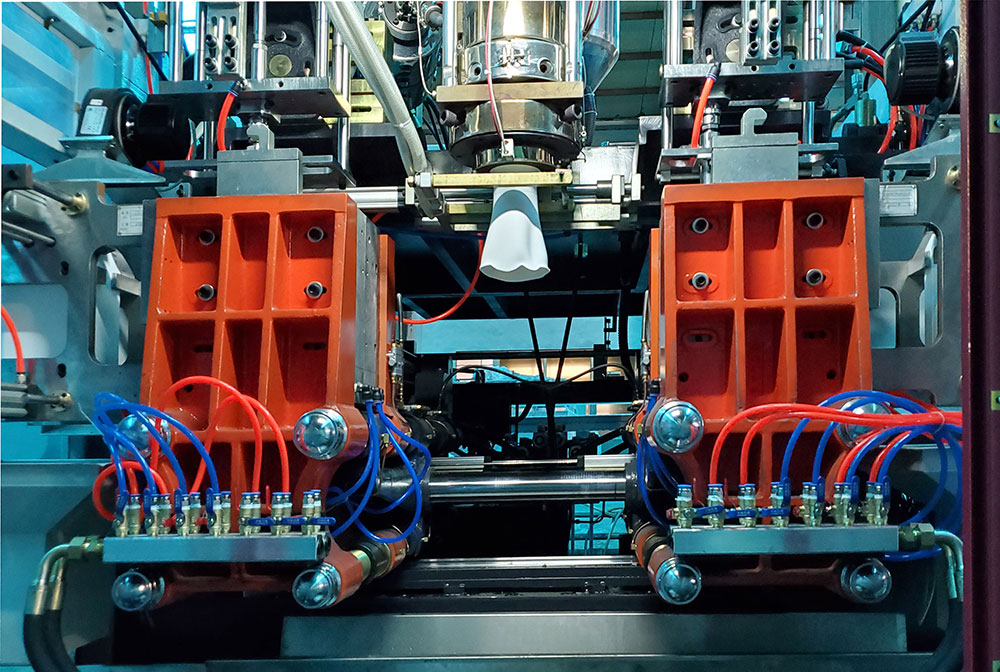
Inserts in the mold
A separate insert is generally set at the bottom of the blow mold to squeeze and seal one end of the parison and cut off the tail material. When designing the bottom insert of the mold, the main consideration should be the blank holder and the tail slot, which have an important influence on the molding and performance of the blow molded product. Therefore, the following requirements should be met.

① It must have sufficient strength, rigidity and wear resistance to withstand the pressure generated by the extruded parison melt during the repeated mold clamping process.
② The thickness of the blank area is generally larger than the thickness of the product wall, and more heat accumulates. Therefore, the blank inserts should be made of materials with high thermal conductivity. At the same time, considering the durability of the blank insert, copper-beryllium alloy is an ideal material. For soft plastics, the blank inserts can generally be made of aluminum and can be integrated with the mold body.
③The joint is usually the weakest part of the blow-molded container. A small amount of melt should be squeezed into the joint after the mold is closed but before the tail is cut, and its thickness and strength should be appropriately increased.
④ The tailings should be able to be cut to form a neat cut.
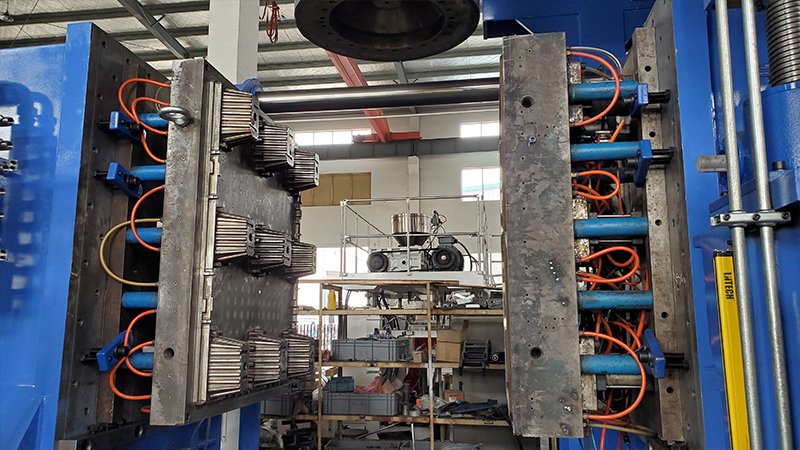
The inserts of the neck of the forming container mainly include a die collar and a cut block. The cut block is located on the die neck ring, which helps to cut off the residual material on the neck and reduce the wear of the die neck ring. The cutting block opening is tapered, and the included angle is generally 60°. The die collar and the cutting block are made of tool steel and hardened to 56~58HRC.
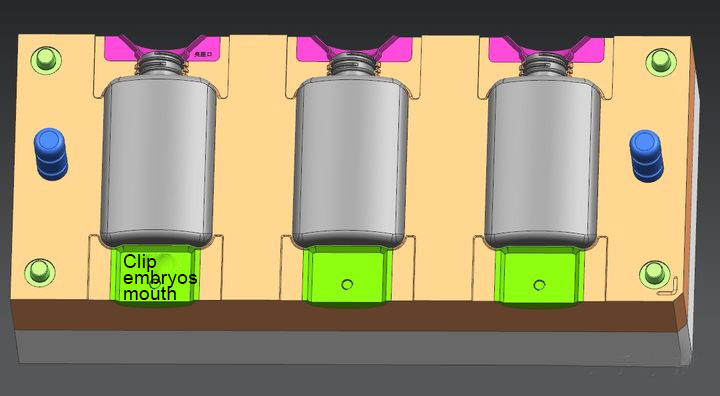
Block of mould
Mold exhaust
For containers with the same molding volume, the amount of air discharged from the blow molding mold is much larger than that of the injection molding mold. The volume of air to be removed is equal to the cavity volume minus the volume after the instantaneous parison has been inflated when the mold is fully closed. Those account for a largerproportion, but there is still a certain amount of air trapped between the parison and the cavity, especially for large-volume blow-molded products. In addition, the pressure in the blow mold is very small. Therefore, there is a higher requirement for the exhaust performance of the blow mold (especially the mold with polished cavity). If the air trapped between the mold cavity and the parison cannot be discharged completely or as soon as possible, the parison cannot be inflated quickly, and it cannot make good contact with the mold cavity after inflation, which will cause defects such as roughness and dents on the surface of the product. , The surface text and pattern are not clear enough, which affects the appearance performance and external shape of the product, especially when the parison appears streaks or melt fracture occurs when the parison is extruded. Poor exhaust will also extend the cooling time of the product, reduce its mechanical properties, and cause uneven wall thickness distribution. Therefore, it is necessary to try to improve the exhaust performance of the blow mold.
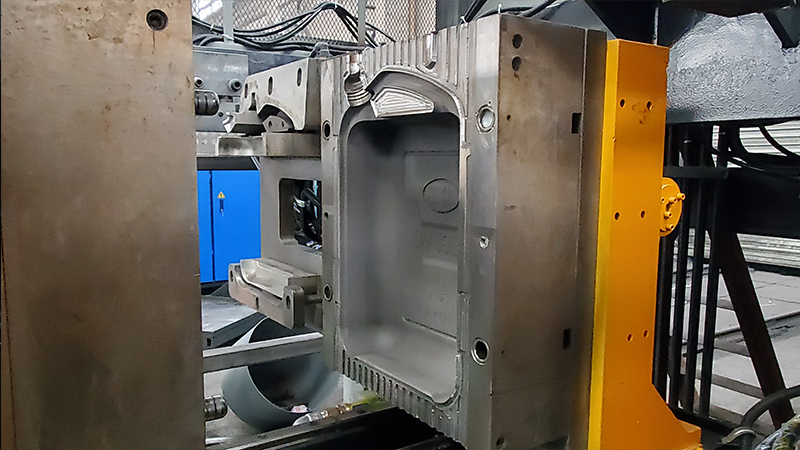
Generally speaking, in the plastic mold, the design of the blow mold is relatively simple, and there is no such structure as the slider and the inclined top in the injection mold. The most important thing is the design of the parting surface and the knife edge.






















